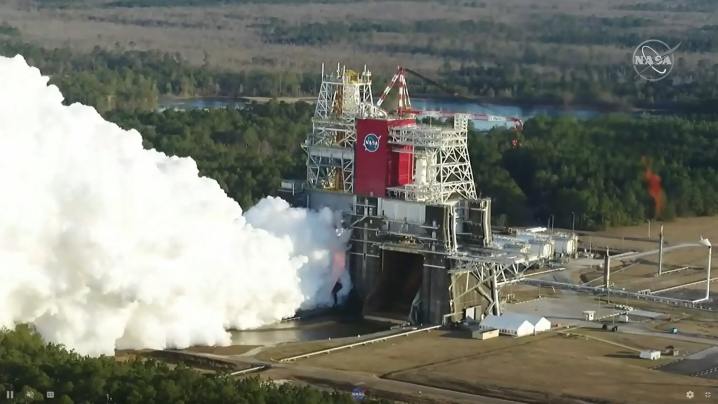
NASA is in the process of testing the world’s largest rocket core stage, which is part of its Space Launch System (SLS) program designed to carry astronauts to the moon and eventually on further to Mars. But the project has been troubled, running over deadlines and over budget. Now, NASA has announced it will be performing a second hot fire test of the mighty SLS engines.
The hot fire test is the culmination of a test fire series called the Green Run, in which the core is powered up and the engines are fired together for the first time. The first hot fire test took place several weeks ago, but although the engines did fire successfully, they only fired for around one minutes instead of the planned eight minutes. Early data from the test indicated that the engines were shut down by automatic safety parameters after there was an issue with the power unit’s hydraulic system.
NASA says that there are no repairs required to the SLS hardware, so it now wants to try the test again. “Inspections showed the core stage hardware, including its engines, and the B-2 test stand are in excellent condition after the first hot fire test, and no major repairs are needed to prepare for a second hot fire test at NASA’s Stennis Space Center in Bay St. Louis, Mississippi,” the agency wrote in a blog post.
The plan is to conduct another hot fire test for the full eight minutes, which simulates the amount of time that the engines would be firing for in a real launch. NASA says that the test can provide additional data on the operation of the engines and reduce risk for future missions using SLS, such as the upcoming Artemis missions to the moon.
No firm date has been set for the second hot fire test, but it could be as early as the end of February.



